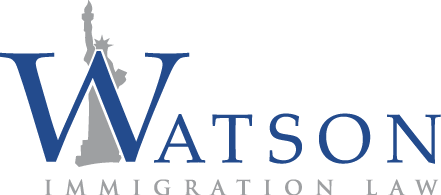 It is no secret that, ever since the Trump Administration first came into office in 2017, the H-1B visa program has undergone significant changes and challenges. Unfortunately, 2020 promises to be no different; H-1Bs and the H-1B visa process will undergo perhaps the biggest fundamental change since the program’s inception in 1990.
It is no secret that, ever since the Trump Administration first came into office in 2017, the H-1B visa program has undergone significant changes and challenges. Unfortunately, 2020 promises to be no different; H-1Bs and the H-1B visa process will undergo perhaps the biggest fundamental change since the program’s inception in 1990.
In the past, employers (and their attorneys) would work tirelessly in the winter months to prepare completed H-1B petitions and submit them to USCIS on April 1st of that year. USCIS would then conduct the H-1B “lottery” to randomly select a number of petitions deemed sufficient to fulfill the annual quota of 85,000 H-1B visas (both Master’s and Bachelor’s categories). USCIS would then inform companies whether or not that petition was selected in the lottery, and adjudicate the selected petitions. That all changes next year. This is what we know at the moment about what that process will look like:
USCIS announced in December 2019 the implementation of an electronic registration process for next year’s H-1B lottery, forever changing the landscape of H-1Bs. Employers (or their attorneys) will now electronically register the company, provide some basic information about themselves and the intended foreign national beneficiary, and pay a nominal $10 registration fee. The information requested by the pre-registration system will include, but is not limited to, the employer’s name, FEIN, mailing address, the employer’s authorized attorney (if applicable) and information about them, the beneficiary’s name, date of birth, country of citizenship, gender, passport number, educational level, and confirmation as to whether they have received a U.S. Master’s degree or higher. Employers will have to file one registration for each foreign national beneficiary they wish to employ. Employers will also have to electronically attest that, if selected, they intend to in fact file an H-1B petition on behalf of the listed beneficiary.
After the registration period is concluded, USCIS will then conduct a random selection process based on those electronic registrations; only those selected will be eligible to file cap-subject H-1B petitions. The registration period will run from March 1, 2020 until March 20, 2020. If a registration is selected, USCIS will electronically notify the employer or the attorney of record of the successful selection, and that they are eligible to file an H-1B petition within the designated window. Employers and their authorized attorneys will then have 90 days from the date of selection to file completed H-1B petitions with all the supporting documents and filing fees. While the new rules are silent on this, we assume that USCIS will allow H-1B petitions to be submitted starting on April 1st. As in previous years, substitution of beneficiaries will not be permitted; only the selected registration for a specific beneficiary will be allowed to file a cap-subject H-1B petition.
While this move to electronic pre-registration was advertised as helping employers and USCIS reduce costs and inefficiencies, the immigration community is still fraught with doubt and uncertainty as to how this new system will look and function when put into action. Newly implemented electronic government systems are notoriously bug-laden and glitchy in their early phases. When the Department of Labor first unveiled their new FLAG system for PERMs, the website was nearly unusable for weeks because it was so wrought with technical issues. If this new electronic registration system has even a fraction of those same problems, the consequences could be catastrophic. Website crashes could potentially push the registration period out weeks and months, and subsequently employers will not be able to file petitions in time to have their foreign national employees begin employment with them by October 1st.
On that note, it seems very likely that the H-1B “period” will be pushed back significantly past April 1, perhaps well into May and June, significantly affecting the timing of preparation as well as employment for both employers and the foreign national employees. USCIS has already gained notoriety for their considerable adjudication delays, and it seems doubtful they will be able to adjudicate many petitions before October (unless employers opt to use premium processing). It is important to note that anyone working on ‘cap-gap’ will need to stop working on October 1st until their case is adjudicated. As of yet, USCIS has not clarified what premium processing options will look like for the coming year.
And given the seeming ease of registration, it will be worth seeing how many registrations there are vying for the 85,000 visas available. In years past USCIS has received over 200,000 H-1B petitions; it seems probable that the amount of registrations will be significantly more numerous this time around. Moreover, we are eager to learn if there are any additional protections in place to prevent bad faith actors from abusing the system by flooding it with frivolous registrations. It is common knowledge that there are those out there who believe that tech companies are gaming the H-1B visa system in order to steal jobs from American workers and acquire cheap foreign labor.
From a logistical standpoint, this pre-registration process presents unique challenges and burdens for immigration attorneys preparing and filing these H-1B petitions. The attempted reduction in paperwork and labor seems noble, but with the current Administration continuing its crackdown on H-1B visas, thoroughly analyzing and carefully preparing each and every H-1B petition is paramount to filing a successful case. There is a significant amount of analysis that needs to be done prior to the registration to determine, among other things, whether the job description is suitable and detailed enough, whether the position qualifies as a specialty occupation, what the SOC code and wage level will be, whether the beneficiary is qualified and possesses the requisite education, etc.. Additionally, each case involves screening and strategizing for any other potential issues or red flags. At the end of the day, what would be the point of a successful registration if the case is ultimately a weak one that is unlikely to get approved? These are all issues that we as attorneys must consider and balance in order to provide our clients with the best possible legal representation and ensure the best possible chances of success in these uncertain times.
Please keep in mind that, in typical Trumpian fashion, USCIS has been rather tight-lipped about what this process will look like and how exactly it will function, and they seem to want to provide as little information as possible as late as possible. We will, of course, keep our readers and clients informed as more information comes out about what H-1Bs will look like in 2020.
Adding to the above changes, the Department of Homeland Security published proposed rules to increase USCIS fees. The public comment period ended on December 30th 2019. The agency is now meant to take into account all comments and finalize the rule. While all fees across the board will practically double as well as H-1B government fees. Furthermore, the rules propose that the forms used for employment-based visas are also updated and edited. If that were to happen before H-1B season, we may be dealing with more than just the change of registration. The best we can hope for is that even if fee increases become final before April 2020, that the form changes are delayed. We can only wait and see what happens yet be mentally prepared to deal with any and all changes that are thrown our way.
In light of all of the above, we cannot emphasize enough the importance of planning ahead and thinking strategically for all H-1B filings. We want to assure that all cases are documented and analyzed carefully prior to submitting the pre-registration documentation. Once a petition is selected, we want hit the ground running, file a strong and ultimately successful case, and afford peace of mind both to our employer clients and their intended foreign national employees.
Call or email us if you have questions. Our email address is [email protected].
**Copyright 2020 by Watson Immigration Law. All rights reserved. This material may not be published, broadcast, rewritten or redistributed.
